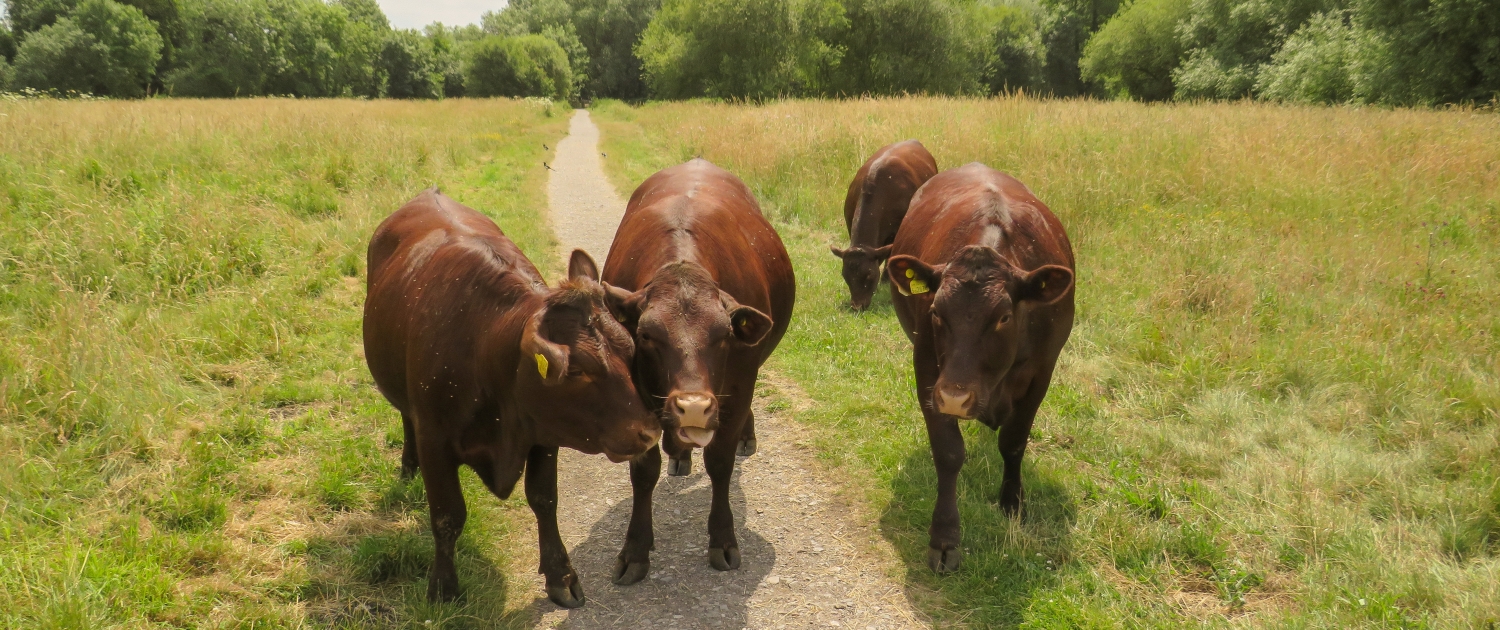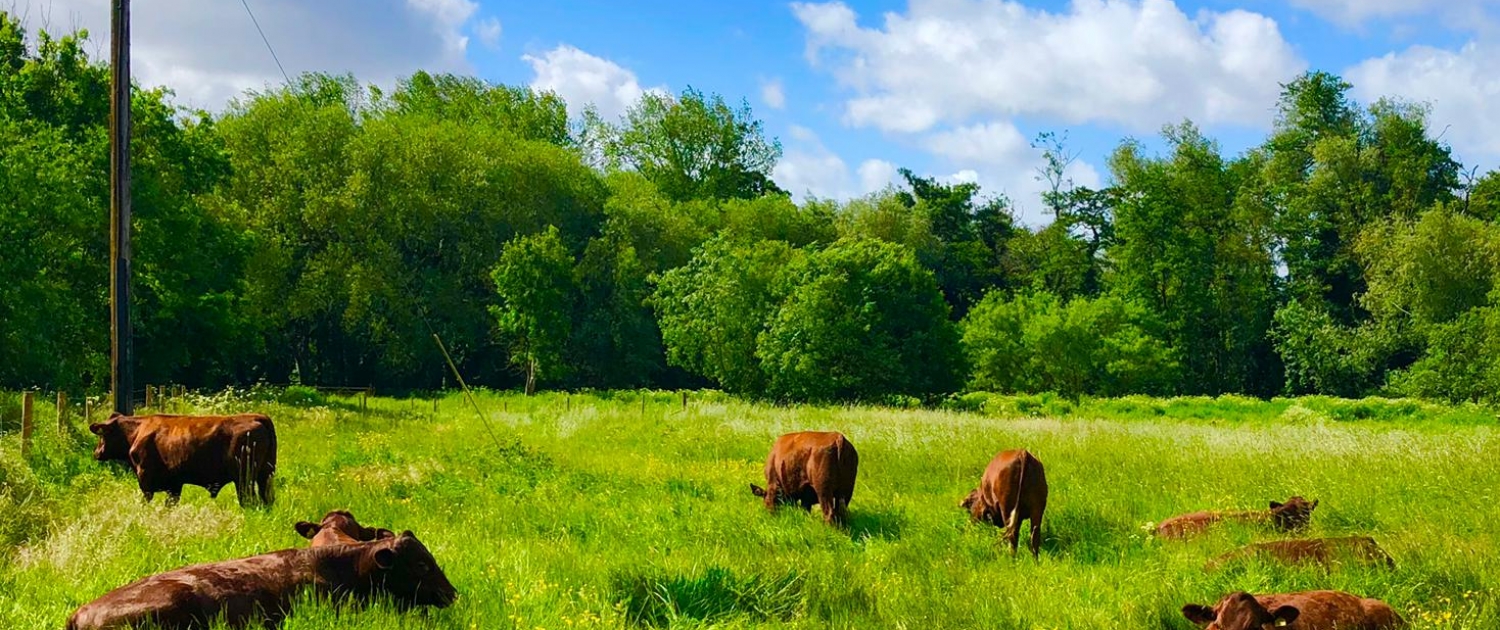Conservation Grazing Project
As part of the Landscape Partnership Scheme, the aim of this project was to introduce and sustain grazing at a selection of sites, boosting biodiversity value and promoting the importance of conservation grazing to the public.
During the 3 years of the project we had cattle grazing few sites around the Colne Valley Regional Park; at Stanwell Moor (Staines), Misbourne Meadow (Denham Country Park), Poors Field (Ruislip Woods), Ickenham Marsh (Ruislip), and Frays Farm Meadow.
Cows Improve Countryside
Would you be surprised to learn that Cattle help in the conservation of the countryside? Want to find out more about why the cows are grazing our meadows? Do you know how you should behave in a field of cows?
Check our news article to answer these questions.
Cattle checkers
As part of this project we were looking for local residents to help, conserve, and champion our local meadows.
People that walk regularly at any of the grazing sites can help by keeping an eye out on the cattle. During the project we had a dedicated team of local residents that kept a close eye on the cattle on their daily walk and made sure they were healthy and that their fencing and water supply were working as they should be.
Below you can find some information about our cattle checking training we offered for our volunteers.
The return of our meadow flowers
The grazing cattle will restore the meadow, forcing back the coarse and dominant grasses and allowing more invertebrates and lower growing plant species to thrive.
If you want to get involved in helping to return wildflower meadows to the Colne Valley, contact us for volunteering opportunities in your local area.
Contact details: [email protected]
The arrival of the Cattle in 2022
In 2022, we now have cattle grazing at 5 sites, Misbourne Meadow in Denham Country Park, Frays Farm Meadow, Stanwell Moor in Staines, Stocker’s Lake in Rickmansworth and Poors Field in Ruislip, beside Ruislip Lido. They are doing a fantastic job at keeping on top of long, coarse grasses and encouraging more wildflowers to flourish. Cattle are also doing a brilliant job at other locations in the valley, including at Poors Field in Ruislip, beside Ruislip Lido.
Misbourne Meadow, Denham Country Park
Poors Field, Ruislip
The arrival of the Cattle in 2020
When the cattle have arrived for the 2020 season, they made it to Youtube and LIVE on Facebook!
See the videos below where we welcomed them to Denham Country Park and Staines Moor.
Cattle Grazing in 2019
The Cattle arriving at Stocker’s Lake
The Dexter cattle were reintroduced to Stocker’s Lake meadows in June 2019 after an absence of many decades. Lonneke Klein-Aarts, Grazing officer, reported: “It was a delight to see the first three being released from the corral into the meadow. Shy for a second, they were soon quickly enjoying their new-found freedom, jumping and running around in excitement. When the second batch was released, the herd reunited in the middle of the field, touching noses in greeting. This was a moving moment for everyone watching them. They ran once around the field before turning to face the public to moo a loud ‘thank you’”.
Cattle introduction at Misbourne Meadow, Denham Country Park
At the beginning of July 2019 the conservation grazers arrived in Denham. A local breed, called Sussex. The cattle were very pleased to be released in this beautiful meadow. They followed the ‘Matriarch’ of the herd showing the rest what can be eaten on a site. Besides the abundant grasses they have tackled a lot of the vegetation we want them to tackle; stinging nettles, cleavers and encroaching scrub. Look in the corner closest to the river Misbourne and the canal next time you are around and spot the difference.
Cattle introduction at Stanwell Moor
The hidden jewel of Staines is Staines Moor SSSI. SSSI stands for ‘site of special scientific interest’ and is a designation awarded to sites that have features or species that are rare in the UK and/or under threat. Natural England, a body created by the government, grants SSSI status and gives permission for future works to occur on such sites. Traditionally grazed, the north-east corner of Staines Moor has been left untouched for many years. Being a bit more ‘wild’ the site attracted wildlife but also a lot of antisocial behaviour and developed the nickname ‘burnt car field’. These cars have been removed, the site has been fenced and grazing cattle have been introduced. The site still holds interesting plants and wildlife but the willow, hawthorn, coarse grasses and invasive species (like Himalayan Balsam) have taken over in the last few years. Cattle have started to take back control and chew away some of these problem species.







